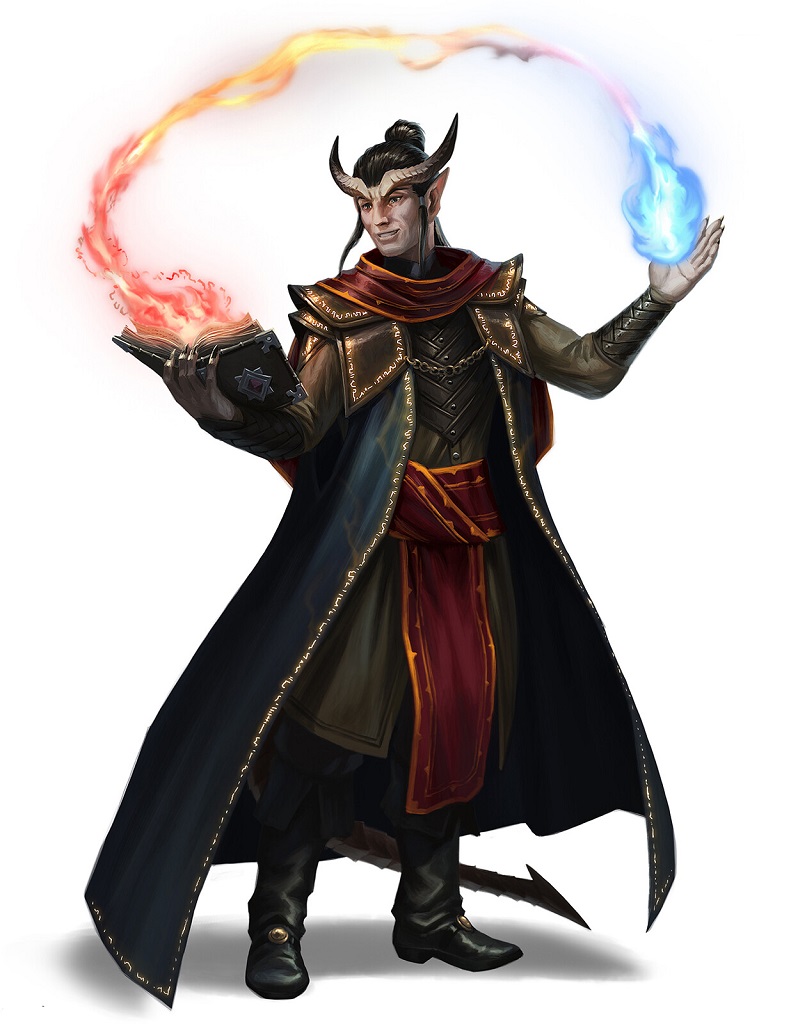After a hard fight and her spells exhausted, the unthinkable happened. The floor caved in and she fell to the dark level below.
Barely alive after the falling damage, she looked and saw an alarmed expression on the faces of her companions. Despite the darkness, her yuan-ti pureblood heritage allowed her to make out the shapes of dozens of rodents quickly approaching her.
Knowing that she would only get one chance, she had to time everything perfectly. Just as the first rats were about to touch her, the sorceress clapped her hands. A deafening boom of thunder reverberated from her person.
The rats screeched in pain as their ears seemed to explode in globs of blood. The survivors scurried away and the sorceress knew that she would live another day.
Thunderclap 5e Guide: Bottomline
Thunderclap is a save-or-damage cantrip for doing thunder damage. The option to do thunder damage instead of other damage types can be useful in certain situations. It doesn’t appear in the Player’s Handbook but was introduced in Xanthar’s Guide to Everything.
Constitution save-or-damage attacks are considered to be the most unreliable because dangerous monsters tend to have a high Constitution. The saving grace of Thunderclap is that it is possibly the best multi-target cantrip in the game.
How Does Thunderclap Work?
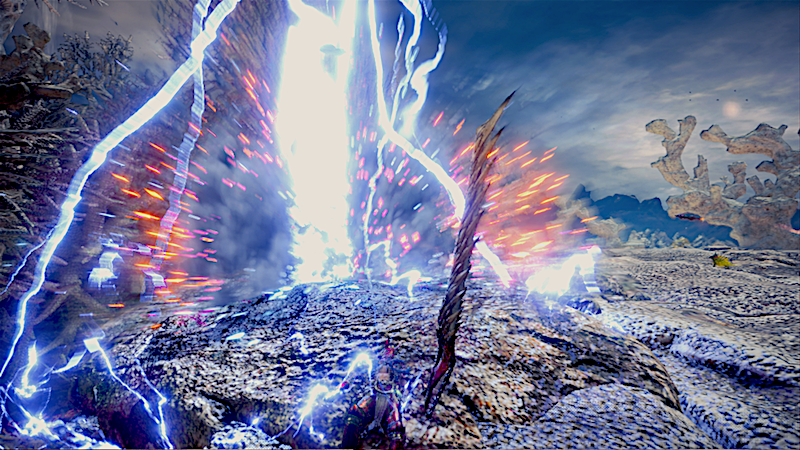
Thunderclap allows you to damage every creature within 5 feet of you with a burst of thunderous sound that can be heard up to 100 feet away. Victims who fail a Constitution saving throw take 1d6 thunder damage. Those who make the save take no damage.
Here are the stats:
Thunderclap
- Evocation cantrip
- Casting Time: 1 action
- Range: Self (5-foot radius)
- Components: S
- Duration: Instantaneous
How Does Thunderclap Scale Upward?
The cantrip’s damage increases to the following amounts as you go up in level:
- 5th level: 2d6
- 11th level: 3d6
- 17th level: 4d6
Who Can Cast Thunderclap?
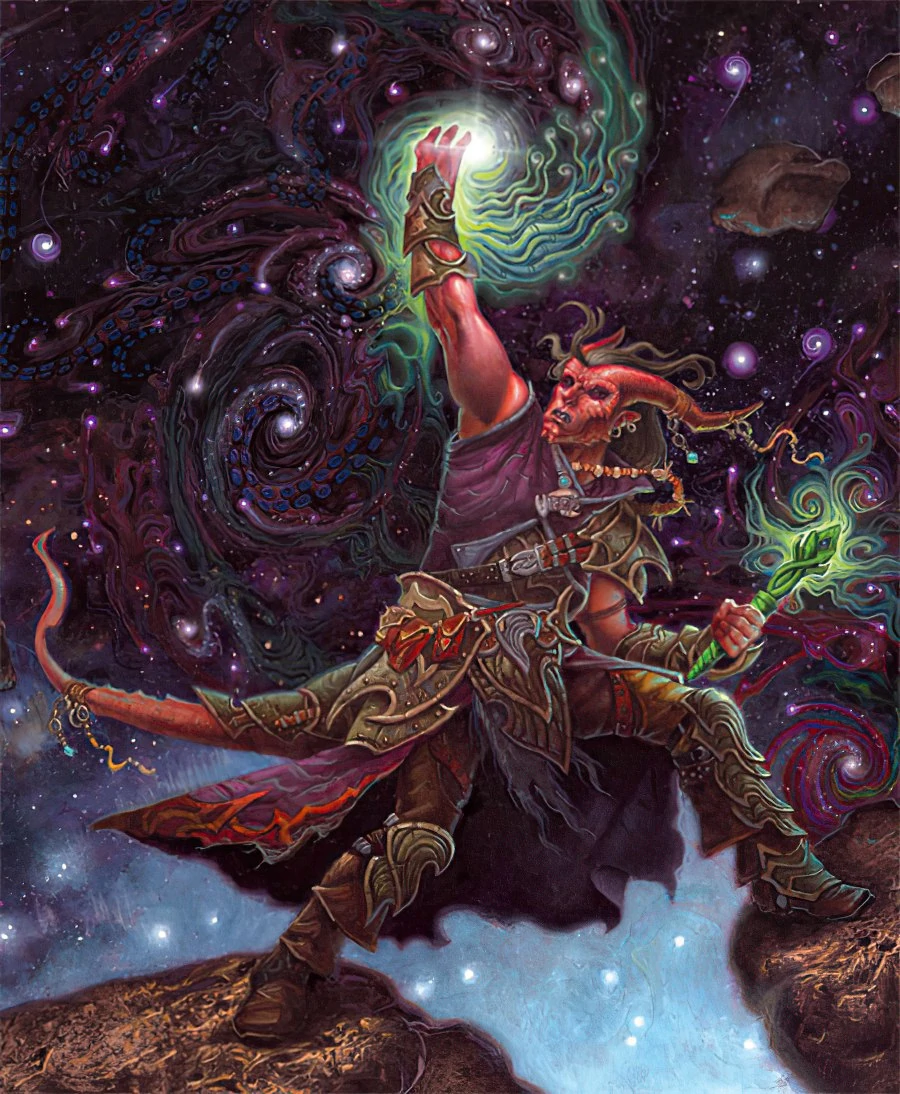
Thunderclap is on the spell-lists for the following:
Is Thunderclap Good?
The answer depends on who is choosing it and using it.
If you’re a tempest sorcerer, you don’t have to choose it.
A free cantrip is always a good thing.
If you have to choose it, that means you’re sacrificing another cantrip in order to get Thunderclap. RAW (rules as written) your character is not supposed to change cantrips throughout his or her adventuring career, but some DMs will let you exchange your cantrips when you level up. If you have only 2 cantrips to choose from, Thunderclap may not be the best choice for you.
Why? Many reasons:
- Constitution saves are the lowest percentage damage dealers in the game.
- If the victims actually fail their saving throws, the damage is pretty minor at 1d6.
- The range is only 5 feet, melee range. If you want to melee, pick a martial class.
- Because Thunderclap creates a loud, thunderous sound, you can kiss Stealth goodbye.
In my opinion, there are many far better combat cantrips:
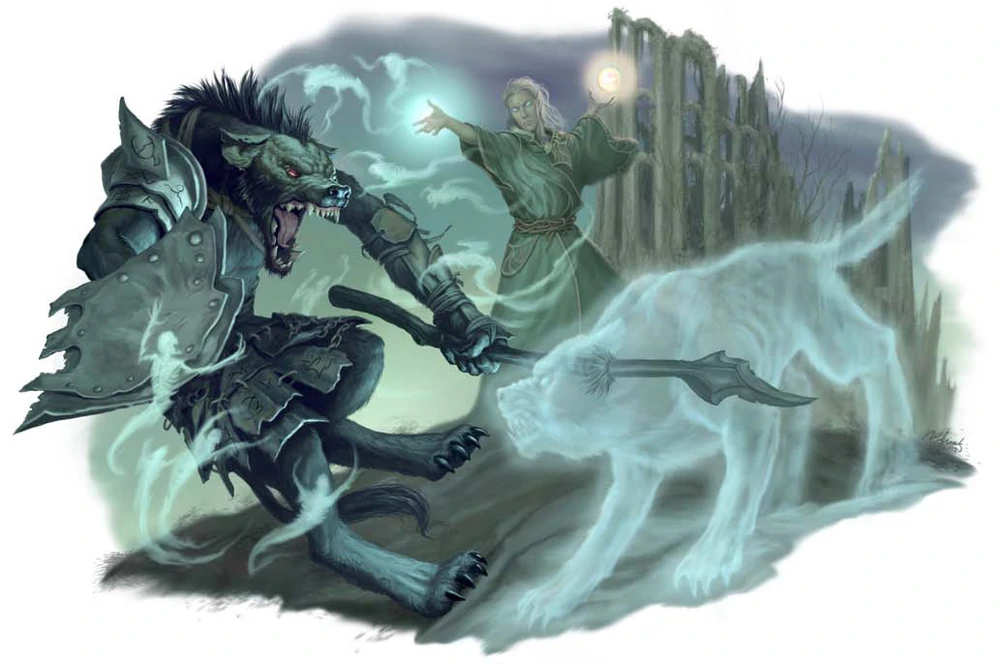
- Eldritch Blast
- Minor Illusion
- True Strike
- Vicious Mockery
- Spare the Dying
- Thornwhip
- Fire Bolt
- Ray of Frost
There are also many more utility cantrips that I consider to be more valuable:
- Guidance
- Mage Hand
- Mending
- Light
- Prestidigitation
There are, however, some noticeable benefits to Thunderclap:
- It’s a multi-target cantrip. While most of these blaster cantrips (Eldritch Blast, Fire Bolt, Ray of Frost) allow you to target only 1 opponent per shot, Thunderclap allows you to target any number of creatures that enter the cantrip’s AOE (area of effect) at the time of casting.
- It’s a melee cantrip, so there is no disadvantage for casting against hostiles within 5 feet of you the way there is with ranged attacks.
- There is no verbal or material component.
If you have three or more cantrips to choose from, you might pick Thunderclap depending on who you are as a caster. Besides the actual classes, RPG players have developed their own slang for the different types of casters that are out there:
- Glass cannons
- Caster-tanks
- Healers
- Utility casters
Most casters, especially as they level up, can cover more than 1 category. However, before you pick your cantrips, it’s a good idea to understand what function your party would usually expect you to fulfill.
Thunderclap and Glass Cannons
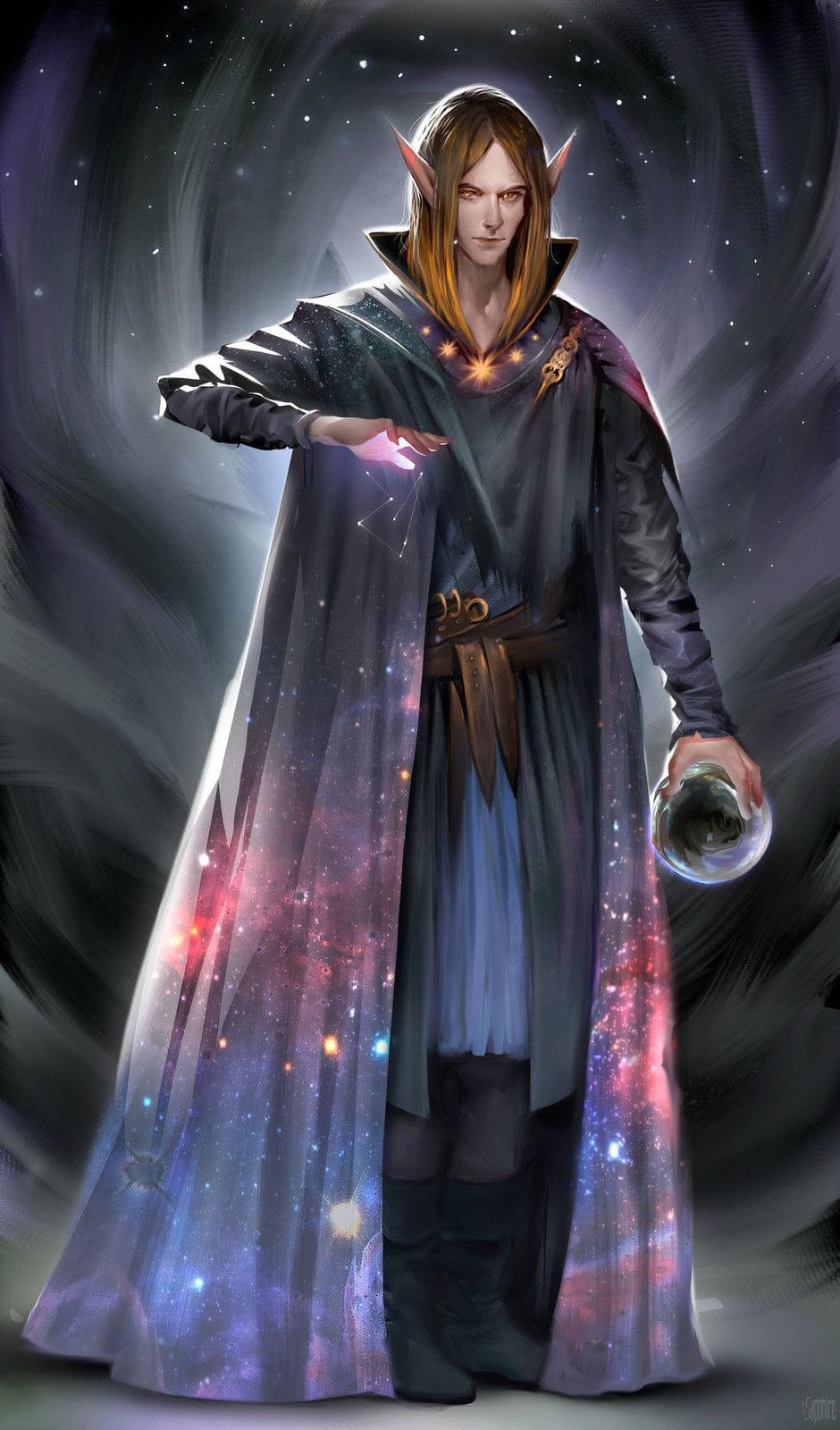
Glass Cannons are your typical damage-dealing casters: sorcerers and wizards. These are the squishy ones with both a low armor class (AC) and low hit points.
Not all sorcerers and wizards fit this description. Draconic bloodline sorcerers get a boost to both their AC and hit points. Mountain dwarf wizards get the medium armor proficiency plus a boost to Constitution and Strength, so they don’t qualify as glass cannons either. Elven and halfling casters tend to have high dexterity scores which adds to both their AC and their melee capabilities.
Tempest sorcerers are great glass cannons but they don’t need to choose Thunderclap because they get it automatically. With their Gale Magic feature, they get to add their Charisma modifier to Thunderclap, so you can expect your typical 1st level, glass cannon tempest sorcerer to have a 16 Charisma and deal 4-10 points of thunder damage on a failed save.
What about the other glass cannons that actually would have to choose Thunderclap at the expense of other cantrips? Is it worth it?
Thunderclap is best used against fragile multiple opponents that are at close range, especially when surrounded.
If you’re a glass cannon at 1st level, getting surrounded by nearly anything, even kobolds, is probably certain death. One exception would be swarm attacks from 1-hit point monsters like rats, bats, insects, and poisonous snakes. Example:
Wan Tei, a female yuan-ti pureblood wildmagic sorcerer has these basic combat stats:
| AC | HP | dagger/hand crossbow | Melee damage | Ranged damage | Poison Spray |
| 11 | 7 | +3 attack/+1 damage | 2-5 (3 average) | 2-7 (4 average) | 1d12 (6 average) |
| AC | HP | CHA | Thunderclap | Dagger Dam 2-5 |
| 11 | 7 | 16 | +5 Casting Mod. Dam 1-6 | +3 attack/+1 damage |
She falls through a weak floor and winds up on the lower level surrounded by dozens of hungry, normal-sized rats. She doesn’t want to get bitten to death, so she takes the Ready action and waits for as many rats to get into a 5-foot radius as possible.
Let’s say about 50 rats enter her AOE before the sorcerer lets loose.
| Rats | AC | HP | HD | STR | DEX | CON | INT | WIS | CHA | Speed | Bite piercing |
| #50 | 10 | 1 | 1d4-1 | 2(-4) | 11(+0) | 9(-1) | 2(-4) | 10(+0) | 4(-3) | 20 ft | +0 Dam 1 |
Obviously, for the Constitution saving throw, the DM is going to roll once for the rats and not 50 times:
DC 8 +5 (Wan Tei’s casting mod.) +1 (rats’ -1 CON mod.) = 14. The rats need to roll a 14 or higher to make their saving throw.
The rats’ chances of rolling a 13 or lower and failing the save are 65%, so Wan Tei’s chances of damaging the rats with Thunderclap are 65%. Since the rats have 1 HP each, if she damages the rats, her chances of killing them are 100%. If there are any rats outside her AOE, the loud sound of the Thunderclap and the spurting blood would probably scare away several dozen rats.
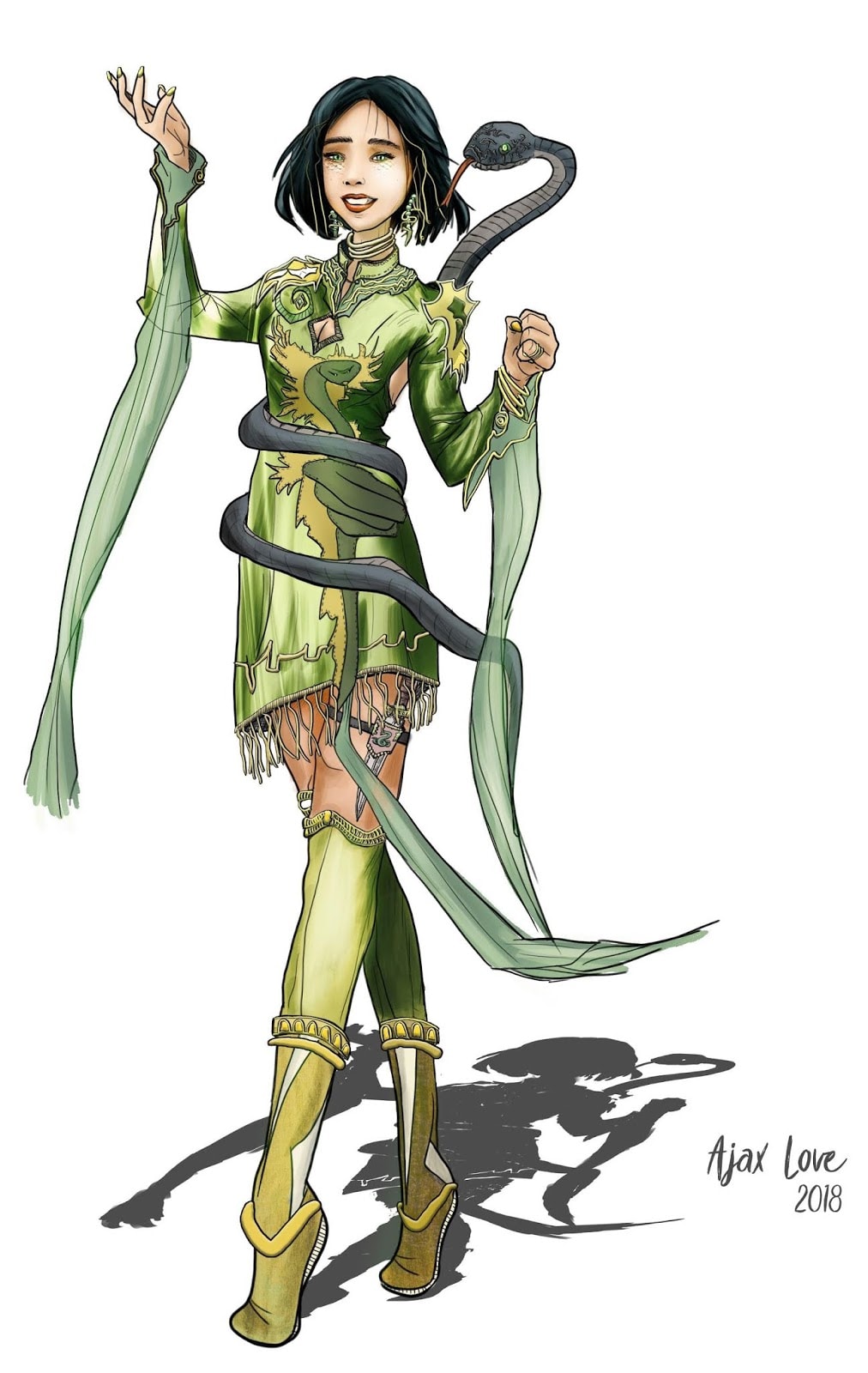
This is an all-or-nothing affair for Wan Tei. The rats have a 35% chance of making their saving throw. If that happens, she will be attacked 50 times during the rats’ turn. Because her AC is 11, each rat attack would have a 50% chance of hitting her. If half of the 50 rats hit her, she would suffer 25 points of damage and would be at -18 hit points. That would be instant death by the end of the 1st round.
The good news is that if she kills all the rats, 65%, she will gain 500 XP and level up after 1 round of combat! 2 out of 3 isn’t so bad, is it?
This could also be used by glass cannons to survive Insect Plague.
With kobolds, probably the weakest horde monsters in the game, it gets worse. They have the same chance of making their throws as the rats do, but the average kobold has 5 hit points. That means your chances of killing each kobold during the 1st round of your Thunderclap are only 33%. (rolling a 5 or a 6 on 1d6) Remember, kobolds have the Pack Tactics feature so if 2 or more kobolds are left alive, each kobold attacks with an advantage.
As someone who has been both a player and DM since the 1980s, my opinion is that if you’re playing a tempest sorcerer, learn to maximize your Thunderclap with some of the principles I’ve discussed above. For all of you other glass cannons, pass on Thunderclap until you have more cantrips than you know what to do with.
If you’re going to be a glass cannon, you need to learn how to stay out of trouble if you’re going to stay alive. Thunderclap is very situation dependent, so outside of those specific situations, it won’t get you out of that trouble.
Caster-Tanks

For those who don’t what a tank is in RPG terms, a tank is a front-line fighter. It’s good if they can deal heavy damage in melee combat, but it’s more important that they can take lots of damage and survive. Raging barbarians tend to make the best tanks.
A good armor class is also important, so fighters and paladins can also be great tanks. Even a high-Constitution, high-Dexterity rogue with Uncanny Dodge can be a good tank in that aspect.
A caster-tank, of course, is a caster that can function as a tank. Since you can’t cast while raging, barbarians don’t make good caster-tanks. Paladins, clerics, Eldritch Knights, and even Arcane Tricksters and mountain dwarf wizards can be good caster tanks.

Thunderclap isn’t designed for fighting 1 opponent at a time. As a multi-target cantrip, it’s best for fighting multiple low-hit-point, low-Constitution monsters in the same turn. While getting flanked and/or surrounded might be suicide for glass cannons, caster-tanks can take it.
If you look at some of the grids above, you’ll see that the caster (C= caster) is either flanked or surrounded by enemies (E = enemy). If you’re medium-sized and you’re surrounded by medium or small opponents, you would have 8 enemies attacking you at once. Depending on whether the DM allows flanking rules, all 8 enemies would be able to attack an advantage.
If you have your back to the wall as shown in the other grid, you would still have 5 enemies attacking you at once, 2 of them at an advantage.
This is why getting flanked/surrounded is really bad for glass cannons. If you’re going to put yourself in this position, you better have a good armor class and hit points. Thunderclap has a range of only 5 feet, but glass cannons shouldn’t let their enemies get that close. It’s a multitarget cantrip but if multiple enemies are touching square/her, they’re probably flanking surrounding you.
Here are some caster-tank 3rd-level character builds:
Eldritch Knight
Gr’a’kryt, a 3rd level githyanki Eldritch Knight has the following stats:
| Ability | Strength | Intelligence | Wisdom | Dexterity | Constitution | Charisma |
| Standard Sequence | 15 | 14 | 13 | 12 | 10 | 8 |
| Customized Sequence | 14 | 15 | 13 | 10 | 12 | 8 |
| Racial ASI | +2 | +1 | ||||
| Ability Scores Total | 16 | 16 | 13 | 10 | 12 | 8 |
| Ability Modifiers | +3 | +3 | +1 | +0 | +1 | -1 |
| Lvl | AC | HP | Move | Weapon | Equipment |
| 3 | 20 | 29 | 30 | Longsword. +5/+3 Dam 1d8+3 (4-11) | Plate, shield, longsword |
Eldritch Knights are decent caster tanks. They can put themselves in the center of many enemies and through the use of their heavy armor and decent hit points, survive long enough to make a multi-target cantrip like Thunderclap work.
I find that the only drawback of Eldritch Knights is that their fighting and their casting tend to get in the way of each other. As they level up to higher-tier play, the real power of fighters in relation to other classes is their ability to make multiple attacks per round with features like Extra Attack and Action Surge.
My personal opinion is that casting gets in the way of that, although the War Magic feature at 7th level would allow them to cast cantrips like Thunderclap as a bonus action.
Mountain Dwarf Evocation Wizard
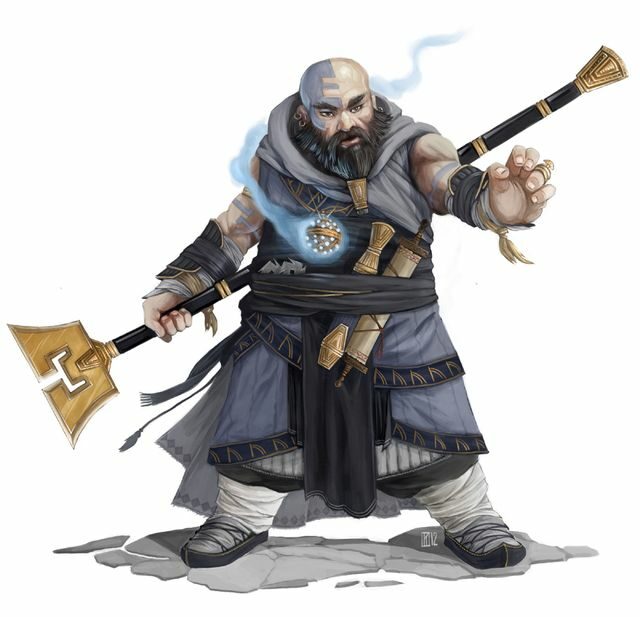
Morgran, a 3rd level mountain dwarf Evocation wizard, has the following stats:
| Ability | Strength | Intelligence | Wisdom | Dexterity | Constitution | Charisma |
| Standard Sequence | 15 | 14 | 13 | 12 | 10 | 8 |
| Customized Sequence | 12 | 15 | 10 | 13 | 14 | 8 |
| Racial ASI | +2 | +2 | ||||
| Ability Scores Total | 14 | 15 | 10 | 13 | 16 | 8 |
| Ability Modifiers | +2 | +2 | +0 | +1 | +3 | -1 |
| Lvl | AC | HP | Move | Weapon | Equipment |
| 3 | 16 | 23 | 25 | Battleaxe. +5/+2 Dam 1d10+4 (4-12) | half plate, battleaxe |
Morgran is a good example of repurposing your class. Because he is a mountain dwarf, he has access to heavy armor, some martial weapons, and ASIs for Strength and Constitution. He actually looks pretty tanky for a wizard.
Because he’s a wizard, he can also be a utility caster due to the fact that his spells are prepared from his book, not known. Like a sorcerer, he could also be the cannon that the party needs with spells like Fireball, etc., but he won’t be a glass cannon for the reasons stated above.
Because Morgran is an Evocation wizard, his class features will really help him maximize Thunderclap as he reaches Tier 2 play (levels 5-10). Because he only has access to 3 cantrips at 1st tier, I wouldn’t start out with Thunderclap for Morgran or any wizard at Tier 1 play.
Clizard (Cleric/Wizard)
Thunderclod the 3rd level Tempvocation Clizard (Multiclass Tempest Cleric 2 Evocation 1)
| Ability | Strength | Intelligence | Wisdom | Dexterity | Constitution | Charisma |
| Standard Sequence | 15 | 15 | 13 | 12 | 10 | 8 |
| Customized Sequence | 14 | 15 | 13 | 10 | 12 | 8 |
| Racial ASI | +1 | +1 | +1 | +1 | +1 | +1 |
| Ability Scores Total | 15 | 16 | 14 | 10 | 12 | 8 |
| Ability Modifiers | +2 | +3 | +2 | +0 | +1 | -1 |
| Lvl | AC | HP | Move | Weapon | Equipment |
| 3 | 20 | 29 | 30 | Longsword. +5/+3 Dam 1d8+2 (3-10) | Plate, shield, longsword |
Thunderclod (clod, not cloud, due to having Charisma and Dexterity as dump stats) is my vision of a character tailor-made for maximizing Thunderclap. He needs modifiers in Wisdom and Intelligence in order to multiclass as cleric and wizard, and he needs a modifier in Strength in order to wear heavy armor.
Tempest Domain clerics are ideal for maximizing Thunderclap for the following reasons:
- Bonus Proficiencies would allow such clerics to use heavy armor and martial weapons, making them tankier. As I said before, my opinion is that most Thunderclap users should be caster-tanks.
- Wrath of the Storm would also make them tankier when being surrounded by opponents because they can deal damage (2d8 lighting) as a reaction to anyone that hits them.
- Channel Divinity allows the caster to deal maximum damage with thunder and lightning attacks, including Thunderclap.
There is only 1 problem with Tempest Domain clerics using Thunderclap. Neither they nor any other clerics have access to it. If they want Thunderclap, they have to multi-class.
In order to have access to Thunderclap, Thunderclod could multiclass as any of the following:
- Bards
- Druids
- Sorcerers
- Warlocks
- Wizards
- Artificers
I want Thunderclod to have access to the Evocation wizard features, which kick in at Tier 2 play, so that’s why he’s multiclassing as a wizard.
Thunderclap and Tier 2 Play
The real maximization of Thunderclap is Tier 2 Play (levels 5-10). That’s when Eldritch Knights get War Magic and Evocation wizards get Potent Cantrip. For the purposes of having all three caster-tanks described above maximize Thunderclap, we’ll make them all 8th level.
Eldritch Knight
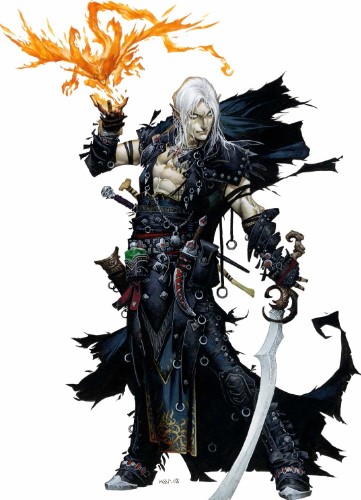
At 8th level, Gr’a’kryt the Githyanki Eldritch Knight will have access to War Magic. That means he will be able to cast a cantrip while making one weapon attack as a bonus action. On the surface, that sounds very cool. However, War Magic would be a much better feature if casting cantrips was the bonus action and attacking with weapons was the action.
When not using War Magic, an 8th-level Eldritch Knight would have the ability to attack 2 times/turn, or 4 times/turn when using an action surge, and 5 times/turn if they choose the Two-Weapon Fighting Style.
Which would you rather do, attack 5x/turn or use Thunderclap?
At 8th level, this githyanki Eldritch Knight could deal 2d6 (2-12 points) worth of damage provided the opponents fail their saving throws, about the same as what he had been able to deal with his sword at 1st level. Now, of course, he would have a bonus attack, which, when you factor ASIs and magical weapons, would do more than 2-12 points of damage.
Of course, with his weapon attacks, he could only attack 4-5 opponents per turn. With his Thunderclap, he could attack up to 8 opponents per turn if surrounded and still have one additional weapon attack with his War Magic feature.
Mountain Dwarf Evocation Wizard

When Morgran reaches 5th level, his damage will increase from 1d6 to 2d6. When he reaches 6th level, his Potent Cantrip feature will kick in and some of that damage will be guaranteed, regardless of the saving throw.
RAW (rules as written), Evocation wizard features like Sculpt Spells and Empowered Evocation don’t necessarily apply to cantrips. The rules don’t specifically exclude cantrips but they only mention spells. If, however, the DM allows these features for cantrips, it would prove very useful as Thunderclap is likely to have some friendly fire situations and it would be nice for an Evocation wizard to add another +4 or +5 to Thunderclap damage.
Tempvocation Clizard
By the time Thunderclod has 8 combined character levels (2 cleric, 6 wizard), he’s going to have a pretty good Thunderclap. He’ll be able to combine the best aspects of a Tempest Domain cleric with an Evocation Arcane Tradition wizard to get the following features:
- Bonus Proficiency
- Wrath of the Storm
- Channel Divinity
- Potent Cantrip
This means that his cantrips will do 12 points of damage on a failed save (Channel Divinity) and 6 points of damage even on a successful save (Potent Cantrip). No rolling is necessary.
Thunderclap at High-Level Play (Tier 3, Tier 4, and Level 20)
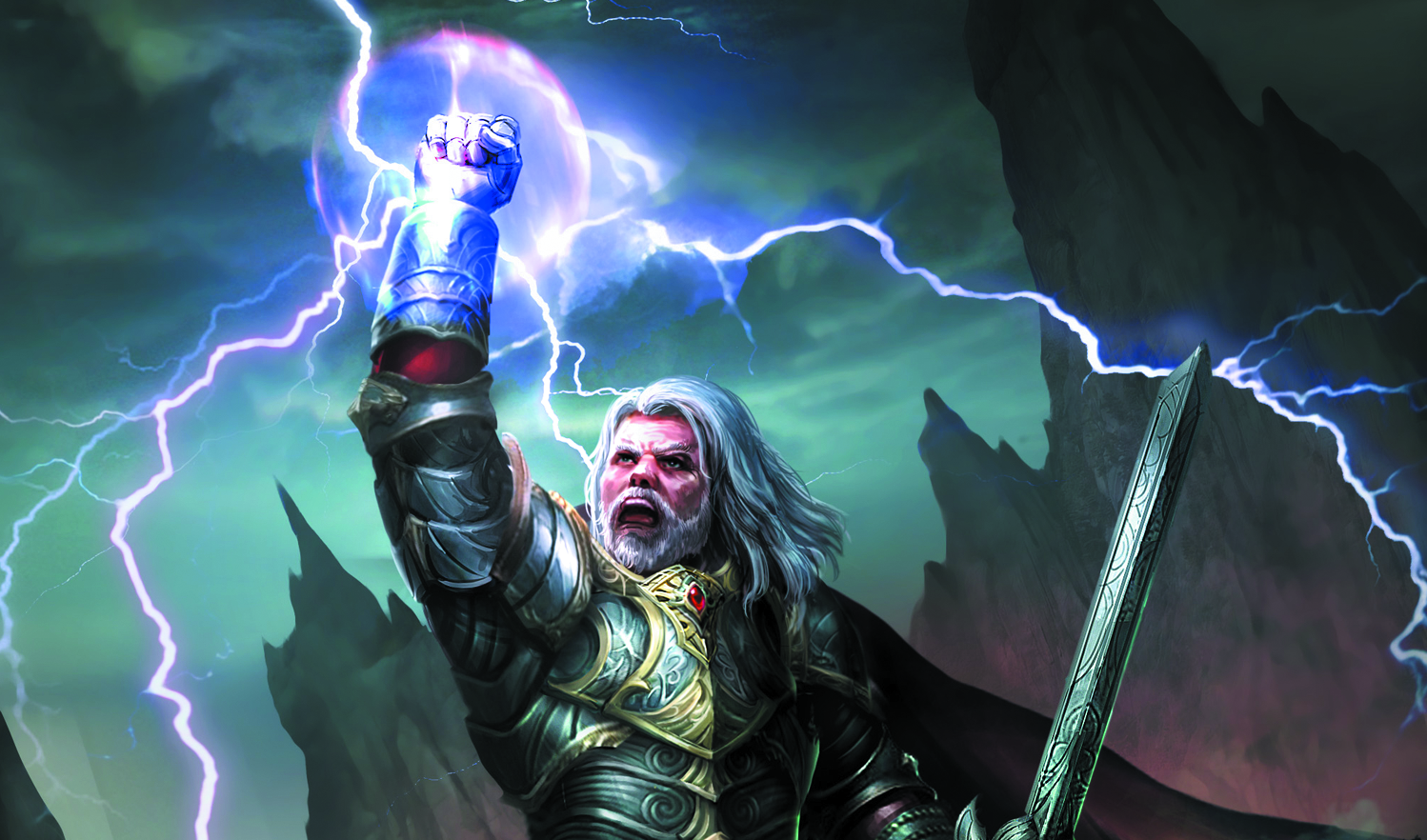
I think it’s highly unlikely that anyone would create a character specifically for the purpose of maximizing Thunderclap, and spend about 2 years or more playing that character all the way from level 1 to level 20. Regardless, as an exercise, I’d like to introduce you to Thunderclod’s female cousin Thundercloud.
Thundercloud
Thundercloud is a Tempest Sclizard of Tempvocation (Multiclass Sorcerer/Cleric/Wizard)
Of course, by the time she gets to character level 20, her class ASIs would adjust her ability scores, In order to see how a triple multiclass could be created, here are scores at 1st level:
| Ability | Strength | Intelligence | Wisdom | Dexterity | Constitution | Charisma |
| Standard Sequence | 15 | 15 | 13 | 12 | 10 | 8 |
| Customized Sequence | 14 | 12 | 13 | 8 | 10 | 15 |
| Racial ASI | +1 | +1 | +1 | +1 | +1 | +1 |
| Ability Scores Total | 15 | 13 | 14 | 9 | 11 | 16 |
| Ability Modifiers | +2 | +0 | +2 | -1 | +0 | +3 |
At 20th character level, her class levels would be as follows:
Tempest Cleric 3
Evocation Wizard 6
Tempest Sorcerer 11
Because she has a 13 or higher in Charisma, Wisdom, and Intelligence, she can multiclass back and forth as sorcerer, cleric, and wizard. If she starts out as a sorcerer, she would get Thunderclap for free. Eventually, she would have access to all of the following class features:
- (Cleric) Bonus Proficiency
- (Cleric) Wrath of the Storm
- (Cleric) Channel Divinity
- (Wizard) Potent Cantrip
- (Sorcerer) Gale Magic (add Charisma modifier to damage)
- (Sorcerer) Whirlwind Step (escape route when being surrounded is too much)
- (Sorcerer) Storm-A-Brewing (renew sorcery points by killing opponents with thunder/lighting spells)
What does a class-maximized Thunderclap look like?
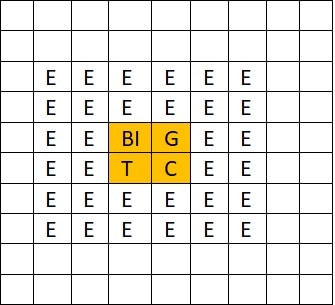
When casting Thunderclap 20th character level, the damage would be 4d6. However, when you add in the Gale Magic feature, the damage would be 4d6+5 (9-31 points). This is assuming that Thundercloud uses her ASIs to boost her Charisma to 20, as most 20th-level casters eventually do with their casting ability.
Of course, due to the Channel Divinity feature for Tempest clerics, Thundercloud’s Thunderclap would do the full 31 points of damage, no rolling.
Even on a successful Constitution saving throw, opponents would still have to take 16 points of damage due to the Potent Cantrip feature.
If Thundercloud uses her Metamagic to purchase the Distant Spell option, she can double her AOE from a 5-foot radius to a 10-foot radius. If she combines that option with casting an Enlarge spell, it would allow more opponents to surround her. In the grid above, I show an Enlarged caster (BIGTC) surrounded by 32 medium-sized enemies trapped within an amplified AOE.
Clorcerer

As I said above, going 20 levels 3-class multiclass just to get some features isn’t realistic. You would have split between 4 stats (3 for the primary stats for 3 classes, plus Strength so you can wear heavy armor). As great a feature as Potent Cantrip is, hanging out as a wizard for 6 levels isn’t worth it unless you really like being a wizard.
In my opinion, the best solution is to incorporate all of the principles above to create a very fun, yet very plausible multiclass, the clorcerer (cleric/sorcerer).
You start out as a tempest cleric and experience that for 3 levels and get the following features:
- (Cleric) Bonus Proficiency
- (Cleric) Wrath of the Storm
- (Cleric) Channel Divinity
In addition, you get some pretty useful free spells like Shatter, not to mention healing spells.
When you’re ready for 4th level, you multiclass as a sorcerer. You’ll get Thunderclap for free, which is great because cantrips are expensive and Thunderclap is highly situational.
You’ll also be a great sorcerer to have around.
Why?
- You’ll be a sorcerer with healing spells.
- You’ll be able to double as a tank (caster/tank). Yes, part of this will be because of your heavy armor and martial weapon proficiency. However, Wrath of the Storm will also make you tankier because enemies will quickly see that attacking you is quite painful.
If you follow this character from 1 to 20, as 3rd level cleric and 17th-level sorcerer, you would enjoy the following features:
- Cleric spells up to 2nd level slot
- Turn Undead
- Sorcerer spells up to 9th level slot
- 4 Metamagic options
- (Cleric) Bonus Proficiency
- (Cleric) Wrath of the Storm
- (Cleric) Channel Divinity
- (Sorcerer) Gale Magic
- (Sorcerer) Whirlwind Step
- (Sorcerer) Storm-A-Brewing
- (Sorcerer) Typhoon’s Fury (reaction attack against hits)
So far, this is my favorite multiclass.
Thundarra the Clorcerer
Thundarra the Half-Elf Tempest Clorcerer Starting stats for 8th level (Cleric 3, Sorcerer 5:
| Ability | Strength | Intelligence | Wisdom | Dexterity | Constitution | Charisma |
| Standard Sequence | 15 | 15 | 13 | 12 | 10 | 8 |
| Customized Sequence | 15 | 10 | 13 | 8 | 12 | 14 |
| Racial ASI | +1 | +1 | +2 | |||
| Ability Scores Total | 16 | 10 | 14 | 8 | 16 | |
| Ability Modifiers | +3 | +0 | +2 | -1 | +1 | +3 |
| Lvl | AC | HP | Move | Weapon | Equipment |
| 8 | 20 | 46 | 30 | Longsword. +6/+3 Dam 1d8+3 (4-11) | Plate, shield, longsword |
By the time Thundarra reaches character level 20, she will be able to do everything Thundercloud can do except Potent Cantrip. Without the opponent’s Constitution modifier, saving throws would be at DC 8 + 6 (Proficiency) +5 (Charisma) = 19. Without a Constitution bonus, the opponent’s chances making a saving throw and avoiding 31 points of damage would be 10%.
FAQs
Question: Can Thunderclap work inside a Silence Spell?
ANSWER: No. Despite the fact that there is no verbal component for thunderclap, phb p. 276 is quite clear, “any creature or object entirely inside the sphere is entirely immune to thunder damage.” however, if the caster is on the edge of the silence spell sphere, and opponents are within 5 feet of the caster but still outside the sphere, they can take damage because the caster can cast thunderclap without speaking.
QUESTION: DOES PHB DISCUSS FLANKING ATTACKS?
ANSWER: No. Flanking is discussed as an optional rule in dungeon master’s guide p. 251.
QUESTION: DOES THUNDERCLAP WORK NORMALLY UNDERWATER?
ANSWER: Yes.
Conclusion
Thunderclap is a saving throw-or-damage multitarget cantrip. Its damage is thunder-based and its AOE is a 5-foot radius. Its only component is somatic. You won’t find it PHB; you’ll have to dig it up in Xanathar’s Guide to Everything.
I have a confession to make. Before I started writing this article, I thought Thunderclap was a crappy cantrip. 1d6 damage on a failed saving zero on a successful save?
However, for the right player, it can be an army killer when properly maximized. I still think it’s not appropriate for glass cannons and low-level casters in general. For mid to high tier, however, it’s a multitarget killer that you can cast all day long. No short or long rests. No sorcery points.
I’ve also discovered that I really, really like Tempest clorcerers.
- Perform Bewitching 5e Guide - October 1, 2022
- Inspiring Leader 5e Guide - September 20, 2022
- Scrying 5e Guide - September 19, 2022


